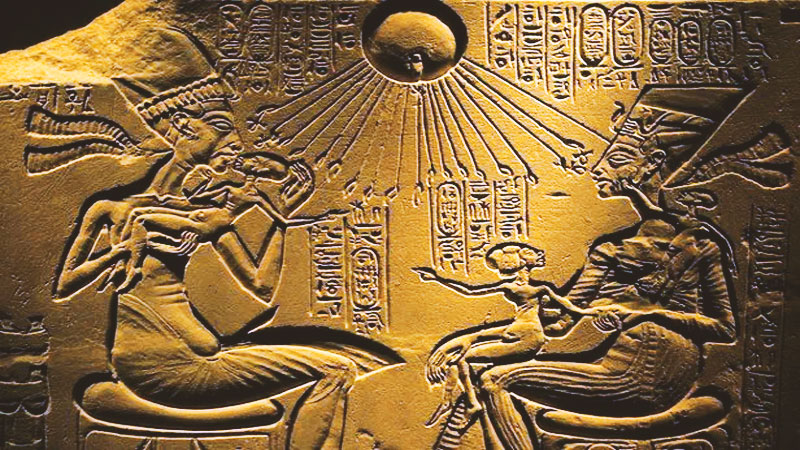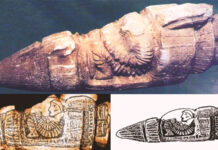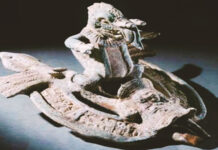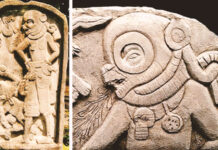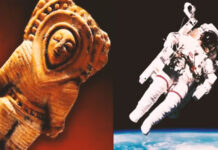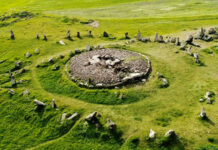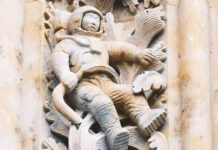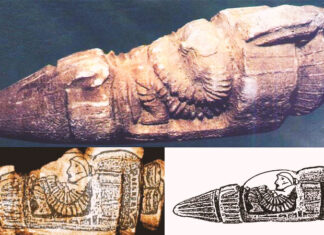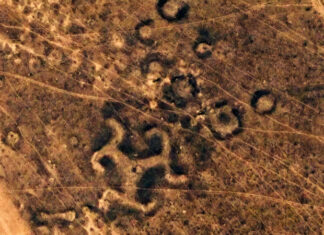Akhenaten and Nefertiti are the most famous royals of Egypt, but it was not always so. Those who came after them, including their son Tutankhamun, tried to erase their history, which was only rediscovered in the 19th century when archaeologists found the city of Amarna.
Pharaoh Akhenaten led the “Amarna Revolution”, moving the capital of Thebes to the city he founded and called Akhetaten, and which later became known as Amarna. He and Nefertiti attempted to convert all of Egypt to the worship of a single deity: Aten the Solar Disk.
This was one of the first forms of monotheism known in a world where the plurality of gods has always been the norm.
Pharaoh Akhenaten
Early in his reign, the young pharaoh became King of Egypt at the age of 15, around 1,364 BC, declared himself the son and prophet of Aten, changing his name from Amenotepe IV, meaning “Ammon is pleased”, to Akhenaten, which means “Active Spirit of Aten”, repudiating the worship of Ammon, who had brought great riches and political influence to the priests, who began to rival the pharaohs in terms of power.
His government was marked by his devotion to Aten and his artistic and pacifist manifestations, making the revolution also apply to all works of art, and although royalty has always been portrayed previously in an unrealistic glorified way, the representations of the royal family during that time were intimate and strangely realistic.
As mentioned in the Encyclopedia Britannica: “The royal family has been portrayed with characteristics that, compared to the standard conventions of Egyptian art, seem visibly exaggerated: a prognata jaw, a thin neck, fallen shoulders, a pronounced belly, large hips and thighs and thin legs. Facial features were characterized by angular, open eyes, fleshy lips, nasolabic wrinkles, and ear shield holes, while princesses are often depicted with an egg-shaped elongated skull.”

The appearance is so strange that some scholars have even suggested that the family suffered from a genetic disease called Marfan Syndrome.
On the other hand, ancient astronaut theorists believe that these would be signs of extraterrestrial origin, but until now, although numerous remaining artifacts from the Amarnian Period have been found, the mummies of pharaoh and its queen are still missing and this mystery remains unanswered.
Aten: Celestial Sun or Extraterrestrial Ship?
As the only mediators between Aten and the people, Akhenaten and the royal family became far more important than the priests of Ammon, and only they had contact and permission to speak for Aten, the only true god.
A remaining poem by Pharaoh Akhenaten himself, called the Hymn of Aten, which bears a striking resemblance to Psalm 104 of the Bible, describes a ubiquitous creator of all nature, taking on millions of forms, not just the Sun:
“Men slept like the dead; now they raise their arms in praise, the birds fly, the fish jump, the plants bloom and the work begins. Aten raises the son in the womb of the mother, the seed in men, and spawned all life. He distinguished the races, their natures, languages and skins, and meets the needs of all. Aten made the Nile in Egypt and it rained, like a heavenly Nile, in foreign countries. It has a million forms according to the time of day and from where it is seen; however, he is always the same” – Hymn to Aten.
In Aten’s representations, the disc glowed with sun-like rays, illuminating and blessing the royal family with divine status and wisdom.
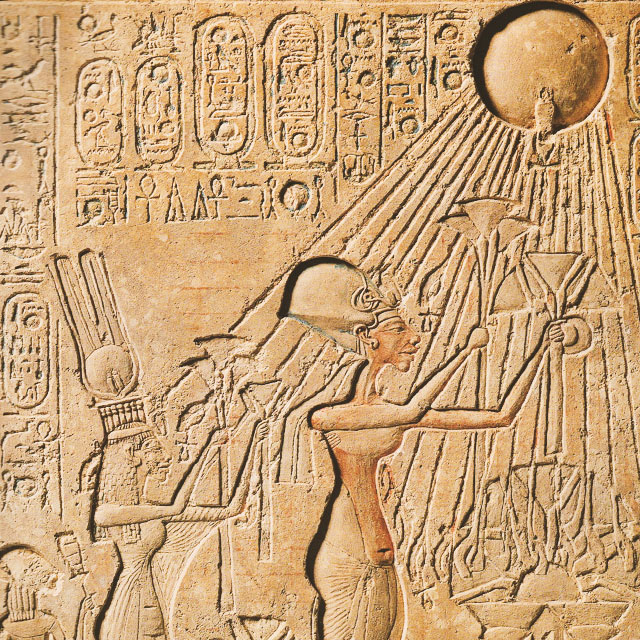
The question that remains is whether pharaoh actually received these messages directly from Aten or was this merely symbolic? Whatever the case, Pharaoh ordered all other temples to be closed and the ancient methods forbidden and destroyed.
Ancient Astronaut theorists present two divergent theories, some of which believe that Akhenaten may have tried to erase ancient religious beliefs as a means of concealing the true origins of the human species, created through genetic manipulation by alien beings and taking their followers away from the truth.
For Giorgio Tsoukalos, the description indicates that Aten was not the celestial body of the Sun, but evidence of sightings of an extraterrestrial ship and a possible direct contact with alien beings that brought the “wisdom of heaven”, or even some kind of technological device that would allow communication with these beings from another world.
“Aten has been described as a Flying Solar Disc. Egyptologists only say that this was nothing more than the Sun, but the question is: could the Sun instruct you in different disciplines? And the answer is no! So we have to see whether or not our ancestors found a technology they couldn’t explain and misinterpreted it as something of nature,” Tsoukalos explains.
On the other side of the world, in South America, there are several legends about golden discs with magical powers, one of which refers to a former Inca ruler named Pachacuti who came to power with the help of a mirrored Solar Disk.
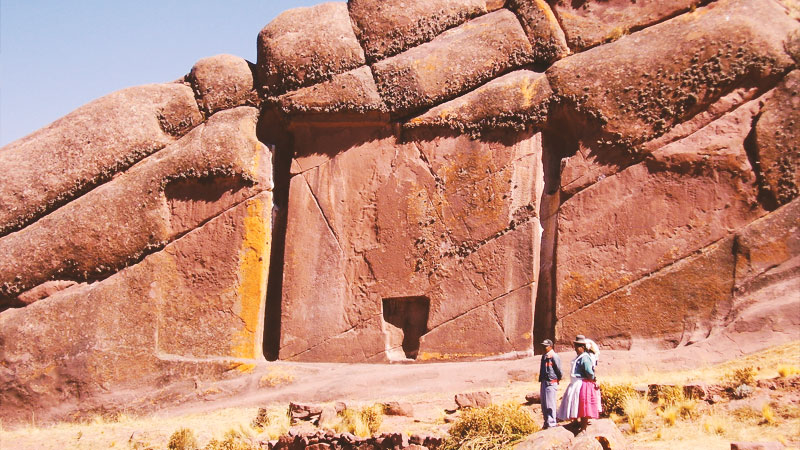
Another legend says that Aramu Muru, a priest of the Inca Empire, fleeing from the Spanish conquerors, hid in the mountains to protect the Golden Disc created by the gods, which healed the sick and helped in the initiation of the priests, and arriving at the “Gate of the Gods”, used the artifact to open a portal through which he entered and disappeared forever, leaving behind the disc in the care of the shamans who protected the portal.
“All over the world, no matter the ancient culture, there is some kind of worship of a record that came from heaven. It’s possible that this disk had some kind of extraterrestrial connection and that it was a technological device,” says Giorgio Tsoukalos.
For traditional archaeologists, Aten would not be a new god in the Egyptian pantheon, but only a manifestation of Ra, the sun god who was already mentioned in the Pyramid Texts, the oldest religious texts found in Egypt, and which would have been elevated to a higher status and above the other gods, referring them to disappearance or a secondary position , in order to hold religious control in their hands and appropriate the goods and riches obtained by the ancient priests.
After Akhenaten’s death, the traditional religion was gradually restored and the later pharaohs discredited him, referring to him as “the heretic pharaoh” in his historical records.

